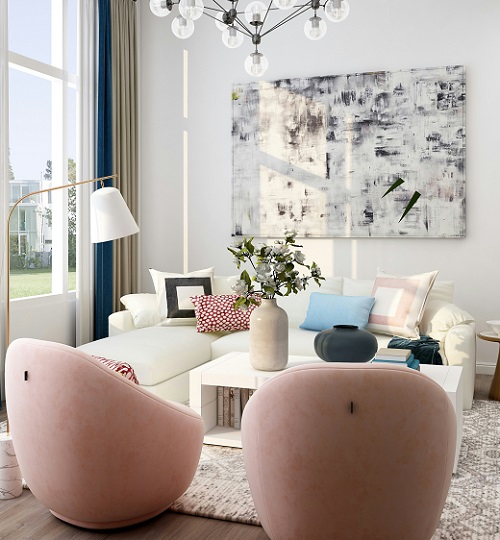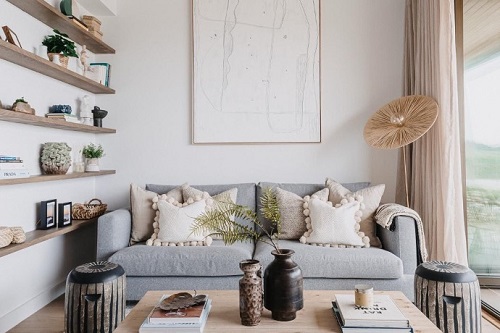Home Office Organizing
By Pamela Wong
Pamela is a Trained Professional Organizer based in Oakville, Ontario and is the owner of Zen N Organized. She helps homeowners and small business owners transform their homes and home offices into organized spaces. She has a practical, non-judgemental approach to organizing. Her objective is to create functional and harmonious spaces for her clients.

Picture these 2 scenarios:
Scenario 1:
Your workday runs smoothly. You turn on your laptop and everything is working. There is no lag in the internet speed, no problems with any of the programs that you are using. Everything is functioning at its optimal level.
Scenario 2:
Nothing is going right with your workday. From the second you turn on your laptop, it is giving you nothing but trouble. Every application you try to open gets hung up, your internet is cutting in and out, your laptop decides to have its mind of its own, and you can’t find any of your saved files in your drive..
Which scenario do you prefer? No brainer, right?
A cluttered and unorganized office space causes distraction which in turn causes more stress. You will feel overwhelmed and as a result, your productivity goes down.
In contrast, when the space is working and everything runs smoothly, your workday will be productive. You will feel more relaxed, generate better results and happier clients.
Having a functional working environment is one of the major factors in contributing to a productive day. The question is, how do you create a functional workspace that works for you?
As with most things about organizing, you need to start with a plan.
You probably have an image in your head of what you would love your office to look and feel like. Use that image as your inspiration, determine things you need in the room and what you can get rid of. What things are clutter and causing an imbalance and what are items that must stay in the room?
Desk
Let’s start with your immediate desk space. Items on your desk and in the desk drawers are prime real estate, so be mindful of what you are keeping here.
- What are the most used items on your desk? For most people, it would be their computer and items associated with it (e.g. keyboard and mouse if it is a desktop). Use the computer as your “centerpiece” and expand from there.
- What are the next most used items that also need to be on your desk? Would it be pens and pencils? Or a specific notebook? Or other stationery? Place these items next to your centerpiece so that they are always in reach.
Desk Drawers
If you have drawers in your desk, what should you put in them? Remember your desk needs to be functional, so only put items that you use often here. Here are some examples of what to put in the desk drawers:
- Extra stationery – pens, notebook, paper clips, ruler, stapler and staples etc.
- Documents related to your current project(s)
- No junk drawers! Items that you don’t use often can be stored somewhere else. Maximize your space for the things you really need.
Beyond Your Desk
Moving onto the area immediately next to your desk – what are items that you need and should be at arm’s length? The answer varies from person to person. Here’s an example: Some people don’t print often and would prefer the printer to be farther away from them, while others need to print often and would prefer their printer to be close by. There is no right or wrong answer here. Remember, your office needs to work for you.
Continue to expand from there. Do you need storage for your printed files, extra stationery? How often do you need to access them? Do you have a filing cabinet or bookshelf to house these items?
Décor And Inspiration
If your work includes lots of creative thinking, then use décor pieces that stimulate your mind. If your work requires a lot of concentration, then incorporate art that will help you focus. Add things like plants and paint colours to finish off the home office.
Tips On Creating A Functional Home Office
Aside from making the home office functional, here are some extra tips:
- Make it about practicality – Do you use the item? How often do you use it? How much time and money would you save by making the room functional? How many more closed deals or happy clients would you have?
- Make it about what you see – In an ideal world, what would you like the room to look like? What colours are in there? What is the focal point? What would you like to see in this room?
- Make it about how you feel – It’s not just about what you see, but also how you want to feel when you are in this room. What should the mood be like? Inspiring? Calm?
- Let the room help you focus, help you create – By making the room functional and easier to manage, it also allows you to spend time to focus on the task at hand, and help you create new ideas for your project.
Your home office is there to help you, not stress you. When your workday runs smoothly and things are in harmony, there is less stress overall. You will be able to work more efficiently and generate better results.




Great tips, Pam! Some people focus on function and others on esthetics – you show that both are equally important to creating a productive work environment.
Thank you, Janet! I truly believe a home office can be pretty, functional and be productive in in.